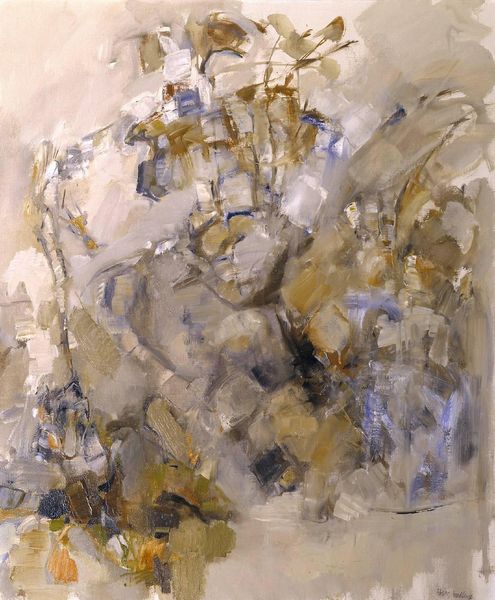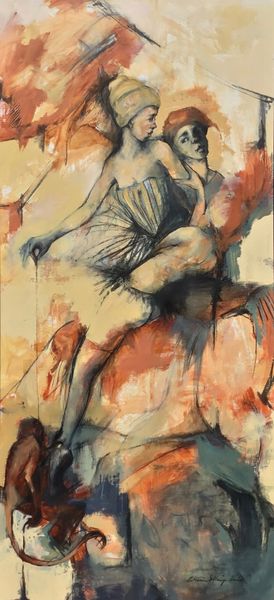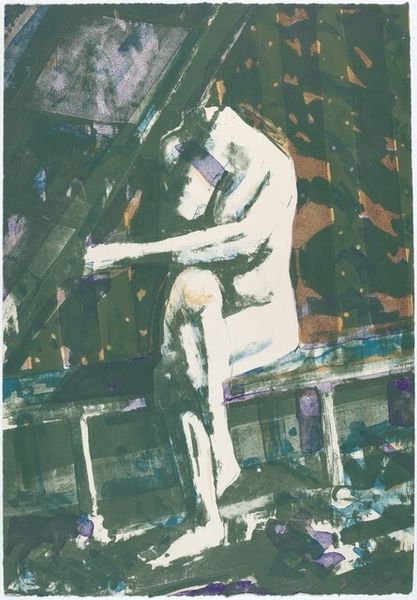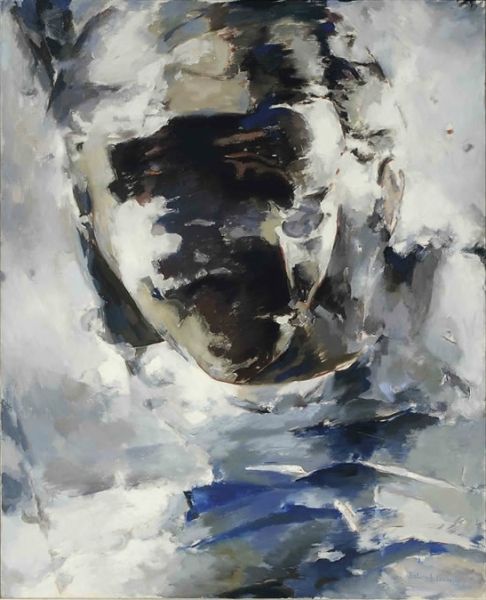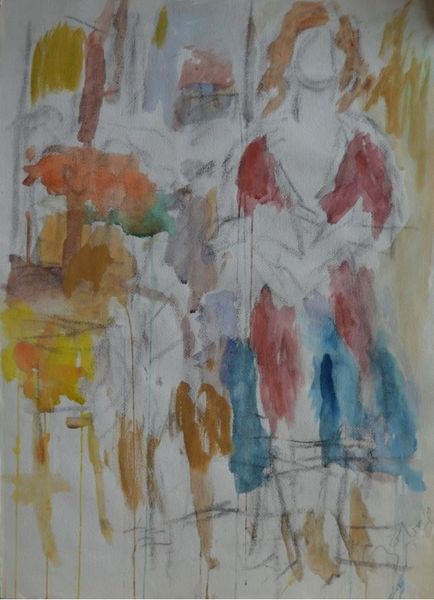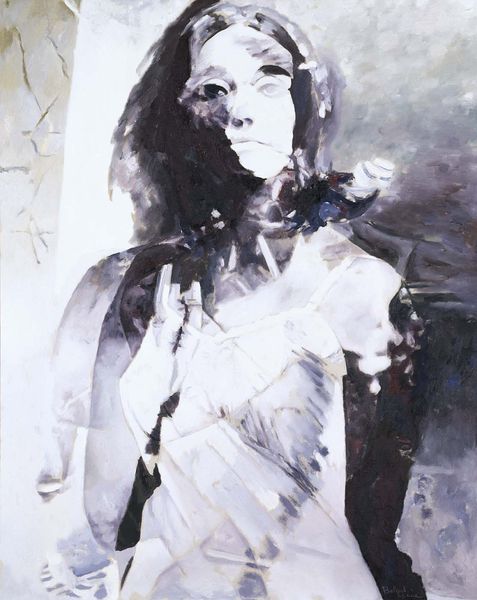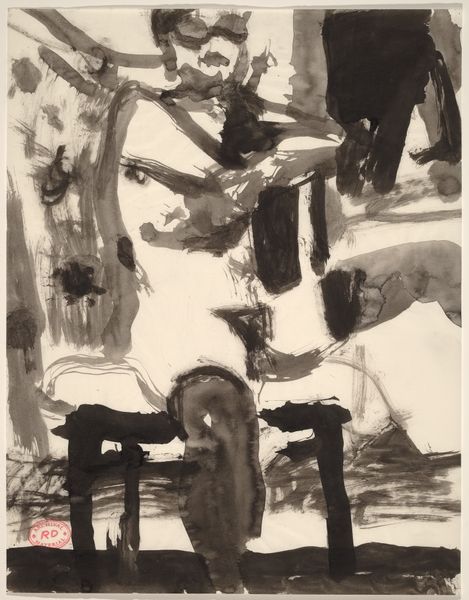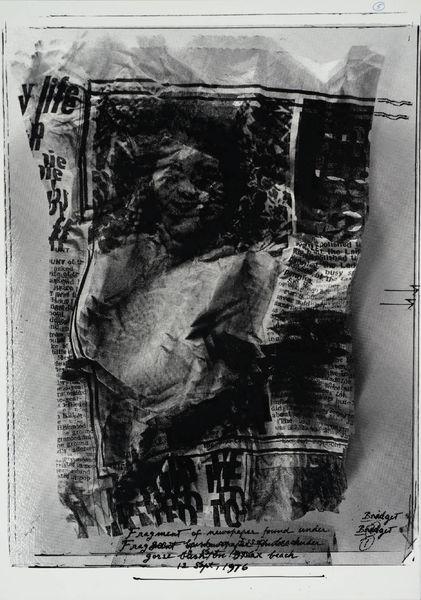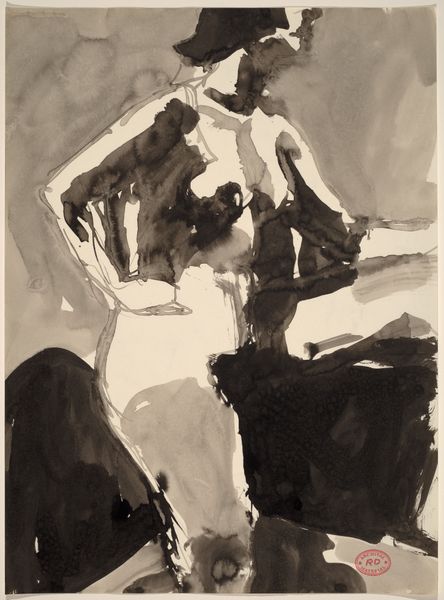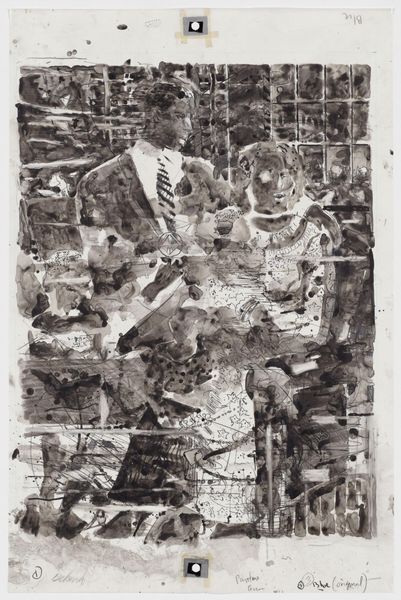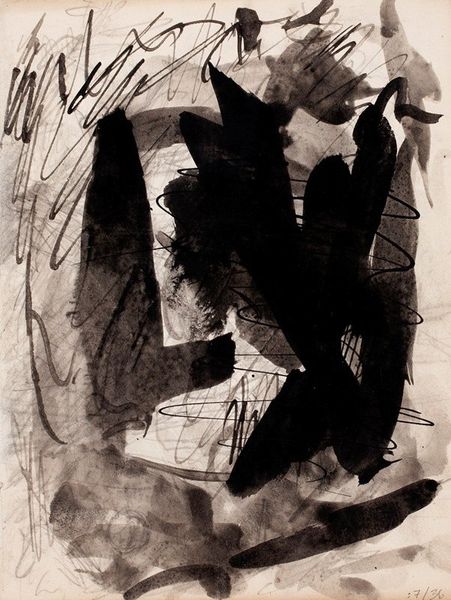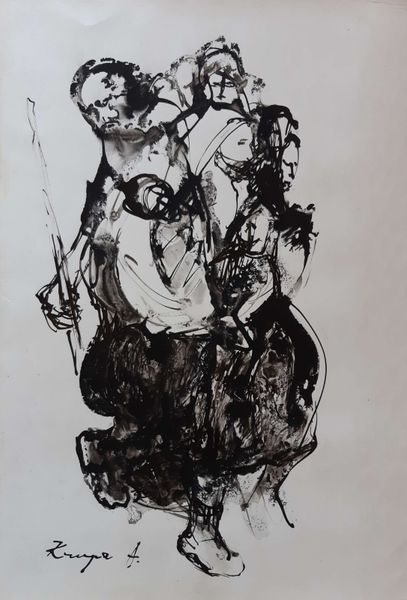
oil-paint
#
portrait
#
abstract-expressionism
#
abstract expressionism
#
abstract painting
#
oil-paint
#
figuration
#
oil painting
#
neo expressionist
#
abstraction
Copyright: Balcomb Greene,Fair Use
Editor: Balcomb Greene’s 1962 oil painting, "Sunlight," strikes me as a really curious mix of clarity and vagueness. You can make out a figure, maybe a face, but it all feels like it's dissolving into the background. What do you see in this piece? Curator: What a perceptive observation. To me, the "dissolving" you speak of isn’t really a disintegration. Instead, the blending of figure and ground evokes a cultural memory – the layered experiences, encounters and emotions shaping our perception of self and the world around us. Consider the layering of paint, how certain areas seem to advance and others recede. What does this rhythm suggest to you? Editor: Well, the areas around the face are lighter and seem to come forward, but it's like the sunlight is washing away details, blurring the edges between the figure and whatever’s behind. Is that deliberate, do you think? Curator: Absolutely. Greene might be hinting at the way sunlight, often symbolic of clarity and enlightenment, simultaneously reveals and conceals. It both highlights aspects of a subject and renders other parts invisible or distorted. Look at the column, a kind of vestigial architecture there… Editor: Ah, yes! I hadn't noticed that initially. Now I wonder if Greene's suggesting how fragile or transient human perception might be... Curator: Precisely! These aren't just abstract forms but echoes of forms held within shared experiences of reality. “Sunlight” embodies our fragmented yet fundamentally connected world, doesn't it? What stays with you most about it? Editor: I think it’s the idea that what we perceive isn't necessarily fixed, but shaped by context and how we see it. Curator: An intriguing perspective, indeed! And, perhaps, that these ephemeral perceptions constitute, ultimately, who we are.
Comments
No comments
Be the first to comment and join the conversation on the ultimate creative platform.
